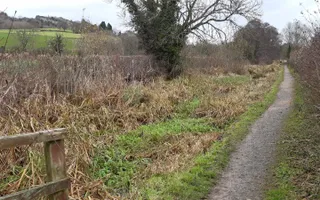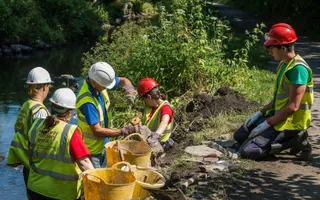Read this page in Welsh / Darllenwch y dudalen hon yn Gymraeg
Dredging
This 7km section of the Montgomery Canal has not been used for navigation since it was closed in the 1930s. Since then, nature has taken over.

However, nature has taken over with ecological succession marching onwards to favour the dominating marginal fringe species, reducing the overall biodiversity and impacting the survival of some of the planet’s rarest aquatic plant species.
The canal is a stronghold for both Floating water plantain (Luronium natans) and Grass wrack pondweed (Potamogetons compressus), two very rare species of plant and therefore of high conservation value. Both plants have a specific niche within the canal, and with this section in its current condition, they are outcompeted by dominant species.
The most appropriate and sensitive approach to the dredging of the section from Llanymynech to Arddleen is not to follow a standard specification that we do on other parts of the network. While we will be looking to achieve a standard minimum navigational envelope and depth, we will take a site-specific approach to how we manage marginal vegetation and tree cover to enhance and protect the diversity of the canal ecosystem.
Our team will consider what vegetation and reed fringes should be retained, assessing the structure of the canal, retaining and marginal vegetation on both sides of the canal in the wider sections whilst possibly keeping the canal more open in the narrower sections.
Floating water plantain tends to follow the shade line of the canal, so we will look at maintaining overhanging branches where safe to do so to provide it with its ideal environment and encourage its growth. While the intention of dredging is to create suitable conditions for navigation, we will also use this work to help ensure we create and maintain a broad and diverse habitat along the length, thus encouraging a range of wildlife to use the waterway.
Our dredging will take place in 3 – 4 phases over the next two years and will include repairs to the bank where required. This will avoid removing all in-channel habitats in one go and will allow species to recover between each phase, reducing the overall impact.
Last Edited: 31 May 2024


Stay connected
Sign up to our newsletter and discover how we protect canals and help nature thrive


